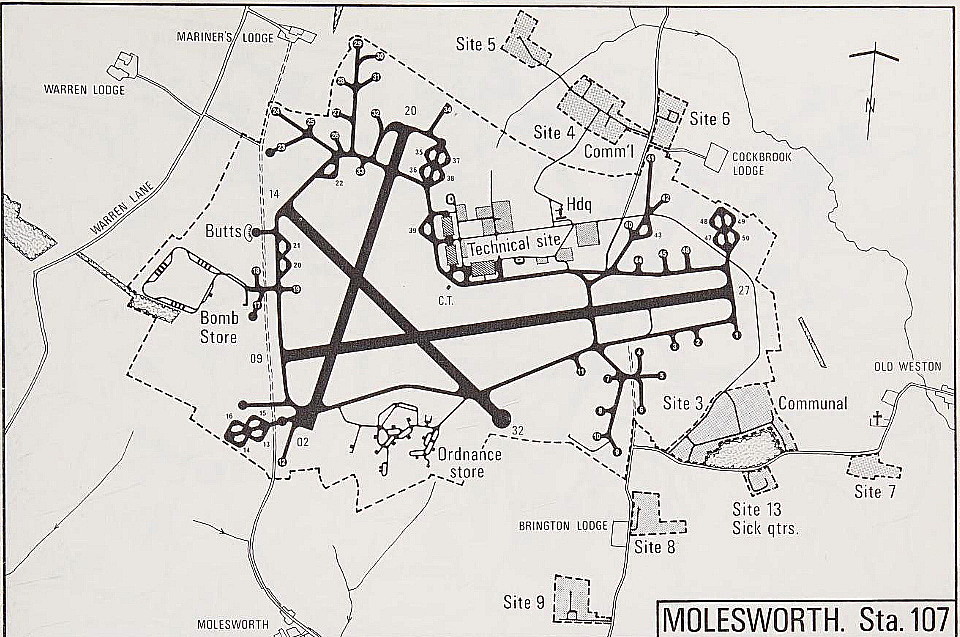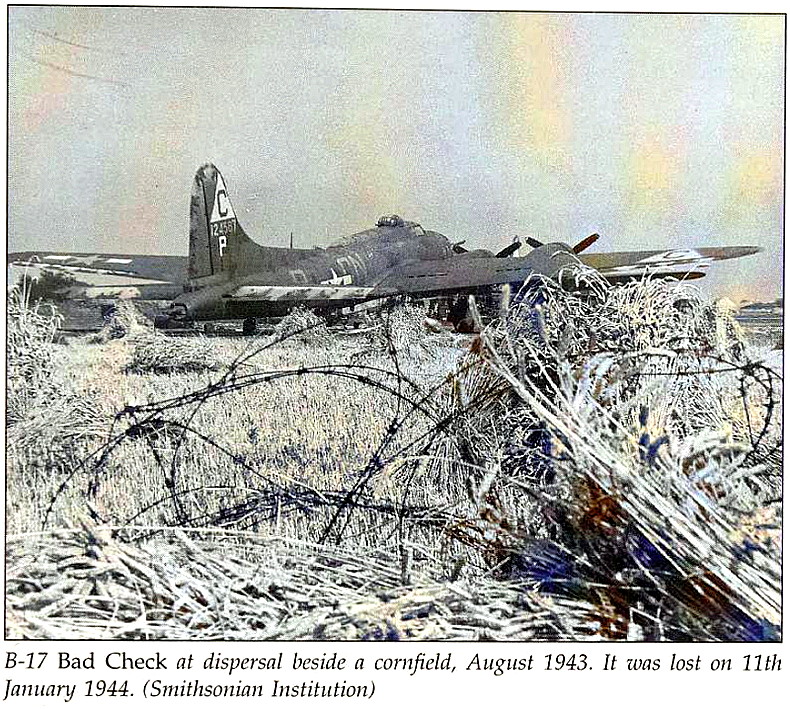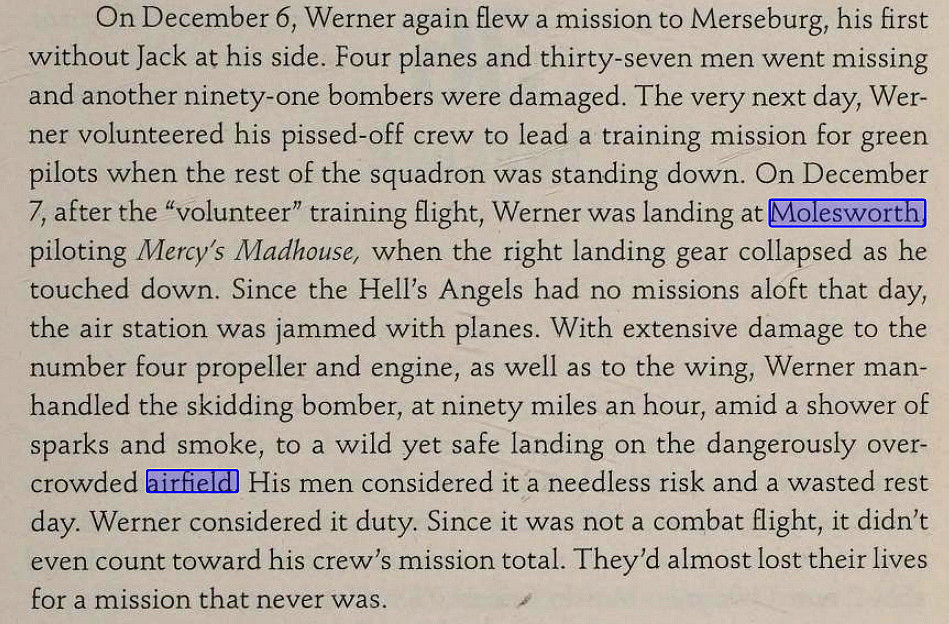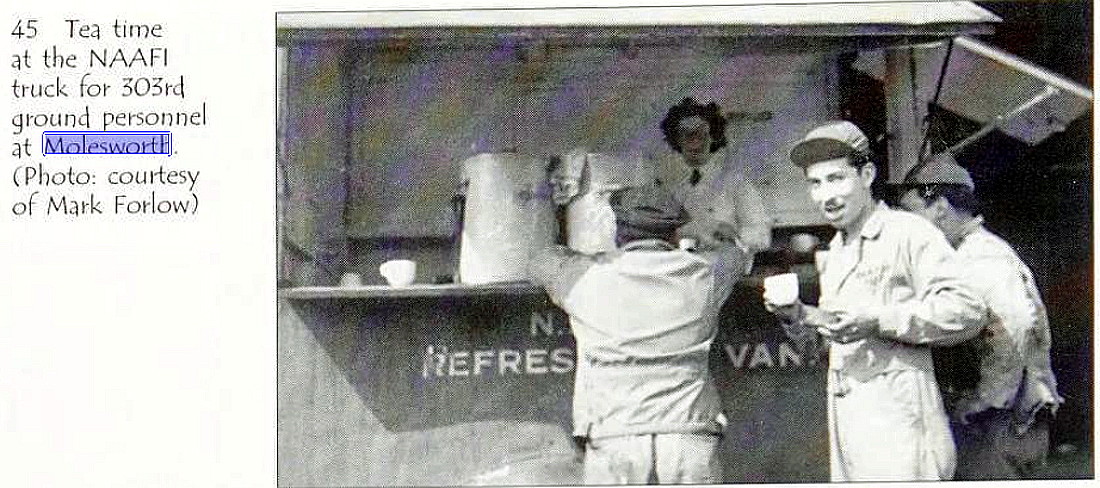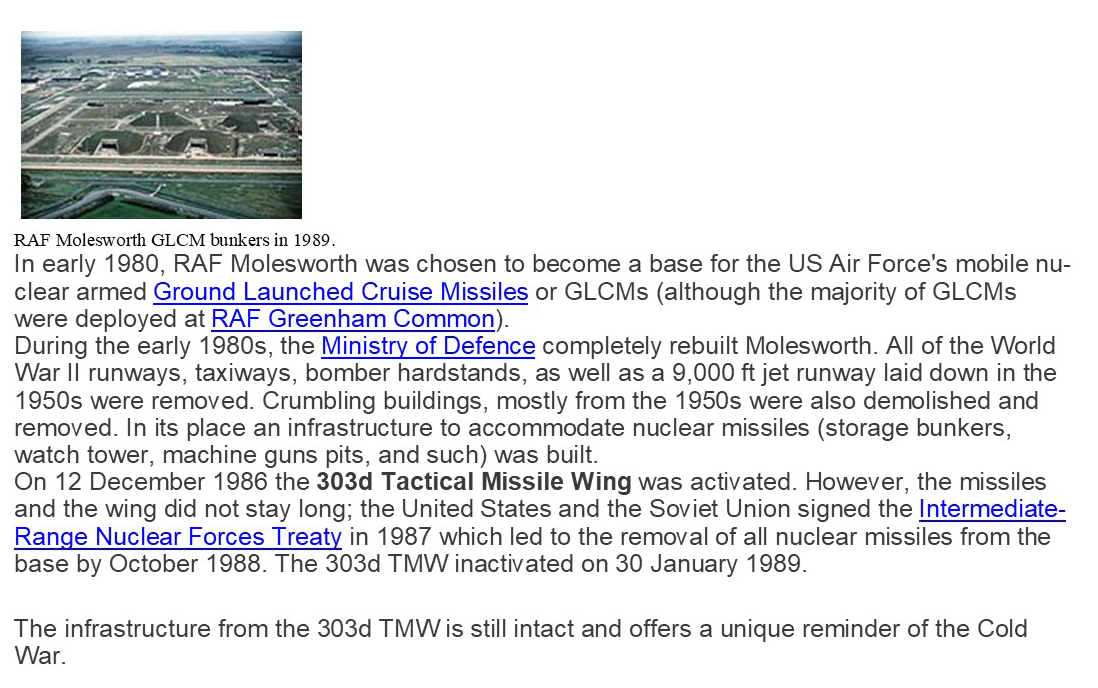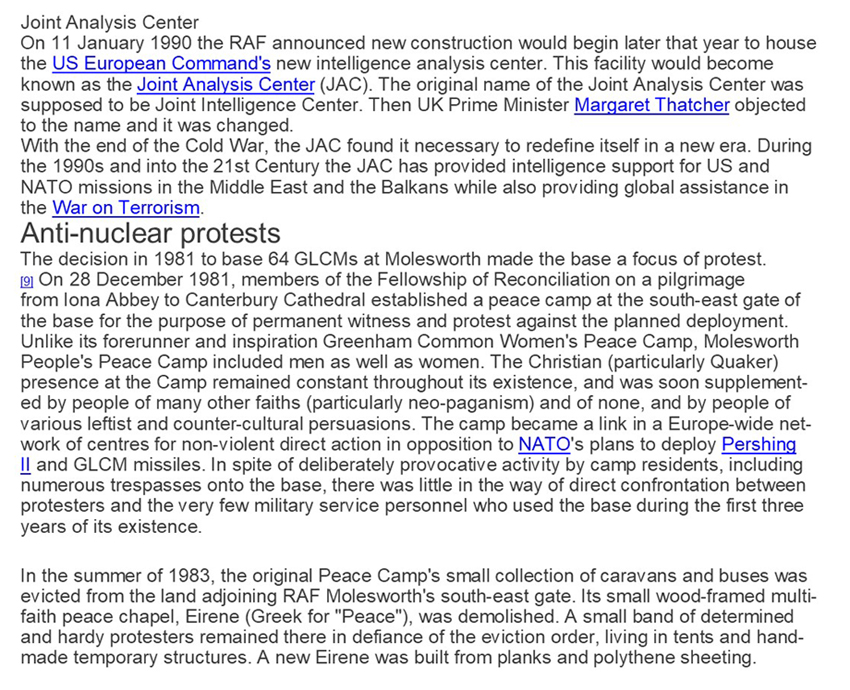Molesworth
MOLESWORTH: Military aerodrome
Military users: WW2: RAF Bomber Command 8 Group
460 Sqdn (Australian) + other RAF units.
Note: Originally 406 Sqdn flew Vickers Wellingtons. They were then intended to fly the Handley Page Halifax but ended up flying Avro Lancasters. However, it appears that, whilst still flying the Wellingtons, they were tranferred to BREIGHTON, YORKSHIRE, in January 1942 - where they stayed and converted onto the Lancaster.
8th USAAF 41st Bombardment Wing 303rd Bomb Group
358, 359, 360 & 427 Sqdns (Boeing B-17 Flying Fortresses)
Post 1945: RAF (Presumably Fighter Command?)
19 Sqdn (North American P-51 Mustangs)
226 OCU (Operational Conversion Unit)
Location: NW of B660, W of Old Weston village, 10nm WNW of Huntingdon
Period of operation: 1941 to late 1950s? (for flying)
Runways: WW2: 01/19 1829x46 hard 07/25 1280x46 hard
12/30 1280x46 hard
A MICHAEL T HOLDER GALLERY
Noticing that this listing was rather sparse in content, and being a great friend of this 'Guide', he decided to have a delve around to see what else might be available. Turned out there was quite a lot! So much in fact that I decided to divide it roughly into seperate sections.
THE LOCATION
THE BOEING B-17 FLYING FORTRESS AT MOLESWORTH
Photo Three, of the 'Eight Ball', is from The Mighty Eighth by Roger A Freeman.
AND YES, OF COURSE, THEY DID GET DAMAGED, AND NOT JUST IN COMBAT
The excerpt is from Hell Above Earth by Stephen Frater.
Photo Five is a great example of just how much battle damage a B-17 could take, and still keep flying. In this case with a large section of the tail missing.
THE TOP BRASS AT MOLESWORTH
In military regimes, especially in a war scenario, it is held to be very important that the 'top brass' make an appearance on, or near, the 'front line'.
But not too near of course. So perhaps we can applaud Brigadier General Travis, (Photo Six), for having the guts to go on a mission.
THE NAAFI
This is a little researched aspect of WW2, for perhaps obvious reasons, which I have failed to understand. In effect the USAAF air bases were almost self reliant, and very well supplied to support their people, including ice cream, peanut butter, Coca Cola etc.
I'd always assumed the NAAFI was a British invention (?), but here we have the NAAFI and similar, on a USAAF base. Including in Photo Ten, a British built AEC bus! Probably built at the AEC factory in Southall, in west London. So, what was going on here?
BEING ENTERTAINED
Note in Photo One that Francis Langford appears to have no arms!
It was considered during WW2, for all armed forces, that providing top notch celebrites was an essential ingredient for maintaining morale. Including major stars from 'the silver screen'. Many of whom of course had enlisted, both in the U.K. and U.S.A.
Photo Four: The USAAF were very keen to establish good relations with the local population, and in this example no doubt had a plentiful supply of suger-laced 'goodies' to hand out to the youngsters. Photo Five: Strange how history develops over the years. The Royal family were more than happy to arrange visits to USAAF air bases, for obvious reasons, and no doubt were very well received?
This being despite them being of mostly German extraction, and the U.S.A, winning a war of Independance against Great Britain. But of course history is chock-a-block with sudden changes of allegence as wars were won and lost, and often still the case today of course. One day fighting the enemy, slaughtering them by the thousands, next day welcoming them with open arms. Wish I could make any sense of it all.
IT WAS HERE
What would we do without maps? Wander around totally lost when not too far from home I suppose. I love looking at old maps to discover how much can change, often quite dramatically, over a relatively short period of time in the greater scheme of things.
The industrial revolution soon changed the nature of much of the U.K. of course, and since WW2, the rapid expansion of old towns, plus the creation of new towns. They in turn rapidly expanding too, plus motorways and many town bypasses, quickly change the nature of the landscape.
AN OVERVIEW OF THE HISTORY OF MOLESWORTH
Mike Holder has very kindly arranged for us, in an easy to read format, the history of MOLESWORTH as presented in Wikipedia.
NOTES: In his book SEPECAT JAGUAR Peter Foster informs us that: “226 OCU was initially formed at MOLESWORTH, within the structure of N.11 Group on 15 August 1946 to train fighter pilots from the re-structuring of No.1335 Conversion Unit, then equipped with a variety of types including Hawker Tempests and DH Hornets, Meteors and Vampires.” The Hawker Tempests and de Havilland Hornets were of course propeller driven, whereas the Gloster Meteor and de Havilland Vampires were the first RAF jet fighters. 226 OCU was disbanded at DRIFFIELD (YORKSHIRE) in 1949.
Still used by the USAFE in 1985….but for flying? This base has continued in use by the Americans to the present day (?) latterly as a Joint Intelligence Centre.
We'd love to hear from you, so please scroll down to leave a comment!
Leave a comment ...
Copyright (c) UK Airfield Guide














